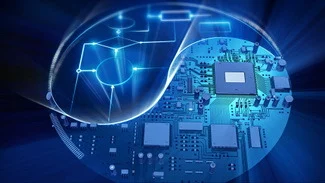Types of Steam Turbine: All You Need to Know

In this blog, we’ll look at different types of steam turbines. Although all steam turbines are made up of the same components, the arrangement of these components causes differences in the turbines, resulting in distinct varieties. In this essay, we will try to introduce you to several sorts of steam turbines and familiarize you with their structure.
What is a steam turbine?
A steam turbine is a mechanical machine that extracts thermal energy from forced steam and converts it to mechanical energy. The turbine is ideal for running electrical generators since it generates rotatory motion. The device is powered by steam, and when the vaporous stream passes between the turbine’s blades, the steam cools and expands, delivering nearly all of the energy it contains, and this is a continuous process. The types of steam turbines and their parameters are discussed in the following section.
Different types of steam turbines
Steam turbines are divided into various types based on their construction, working pressures, size, and a variety of other factors. The impulse and reaction turbines are the two most common types of steam turbines. Other types of steam turbines are essentially variants of these two basic types.
1. Impulse Turbine
The superheated steam is projected at high velocity from fixed nozzles in the casing in this type of turbine. The turbine shaft rotates when steam contacts the blades (sometimes referred to as buckets). A steam turbine’s high and intermediate pressure stages are commonly referred to as “impulsed turbines.” The complete steam pressure decrease occurs only in stationary nozzles. Though the theoretical impulse blades have no pressure drop in the moving blades, in practice, a slight pressure drop across the moving blades is required for the flow to occur.
2. Reaction Turbine
Steam travels from fixed stator blades via shaped rotor blade nozzles, creating a reaction and moving the turbine shaft. A reaction-type turbine is used in the low-pressure stage of a steam turbine. After expanding through the high and intermediate stages of the turbine, this steam is now of low pressure and temperature, making it ideal for a reaction turbine. Steam expands through a fixed nozzle in reaction turbines, converting pressure potential energy to kinetic energy.
The blades (nozzles) are impacted by high-velocity steam from fixed nozzles, which causes them to change direction and expand further. The force is applied by the change in direction and the steam acceleration. The rotor turns as a result of the impulse driving the blades forward. There is no net change in steam velocity across the stage, but there is a decrease in both pressure and temperature, indicating that the rotor is being driven. Because the pressure drop in a single stage is limited in this type of turbine, the pressure dips occur in phases.
Other Steam Turbine Types
As previously stated, there are only two types of turbines. However, there are other types of steam turbines that are derivatives of those two basic steam turbines with alternative layouts, resulting in a new operating principle.
Condensing and Noncondensing Turbines
Condensing and non-condensing Steam Turbines are the first two types of Steam Turbines classified by the new layout and working principle. Steam is condensed below atmospheric pressure in the first type of device to extract as much energy as possible. Steam leaves a noncondensing turbine at above atmospheric pressure and is used for heating or other essential activities before being returned to the boiler as water.
Back-Pressure Steam Turbines
A back-pressure steam turbine is another form of steam turbine that is best suited for mechanical-drive applications such as compressors or pump drivers. Backpressure refers to steam turbines that exhaust steam at pressures higher than the atmosphere.
The discharge pressure of a plant is usually determined by the specific application of steam. Small and big low-pressure (LP) applications, such as heating systems, often use lower pressures. Whereas industrial processes frequently use higher pressures.
Extraction Steam Turbine.
Extraction steam turbines are the fourth type of steam turbine with a different working mechanism. One or more apertures in the casing of an extraction turbine allow a part of the steam to be extracted at low pressure. The extracted steam can be utilized in the manufacturing process. Depending on the steam turbine design, the steam extraction pressure may or may not be automatically adjusted.
Conclusion
The purpose of this article was to provide all of the necessary information on the many types of steam turbines. The most essential machinery in the energy conversion industry is steam turbines. Knowing the many types of steam turbines will help you better understand the entire construction of the machine. In addition to boosting your technical knowledge of it. Steam and The gas turbine control system help to improve the safety of the turbine by closely monitoring the turbine’s work. IS200VAOCH1C, IS200VCCCH1B are some examples of GE turbine control parts.
We hope you found this information interesting.
You may also like – What is a big data engineer’s average work environment like?




